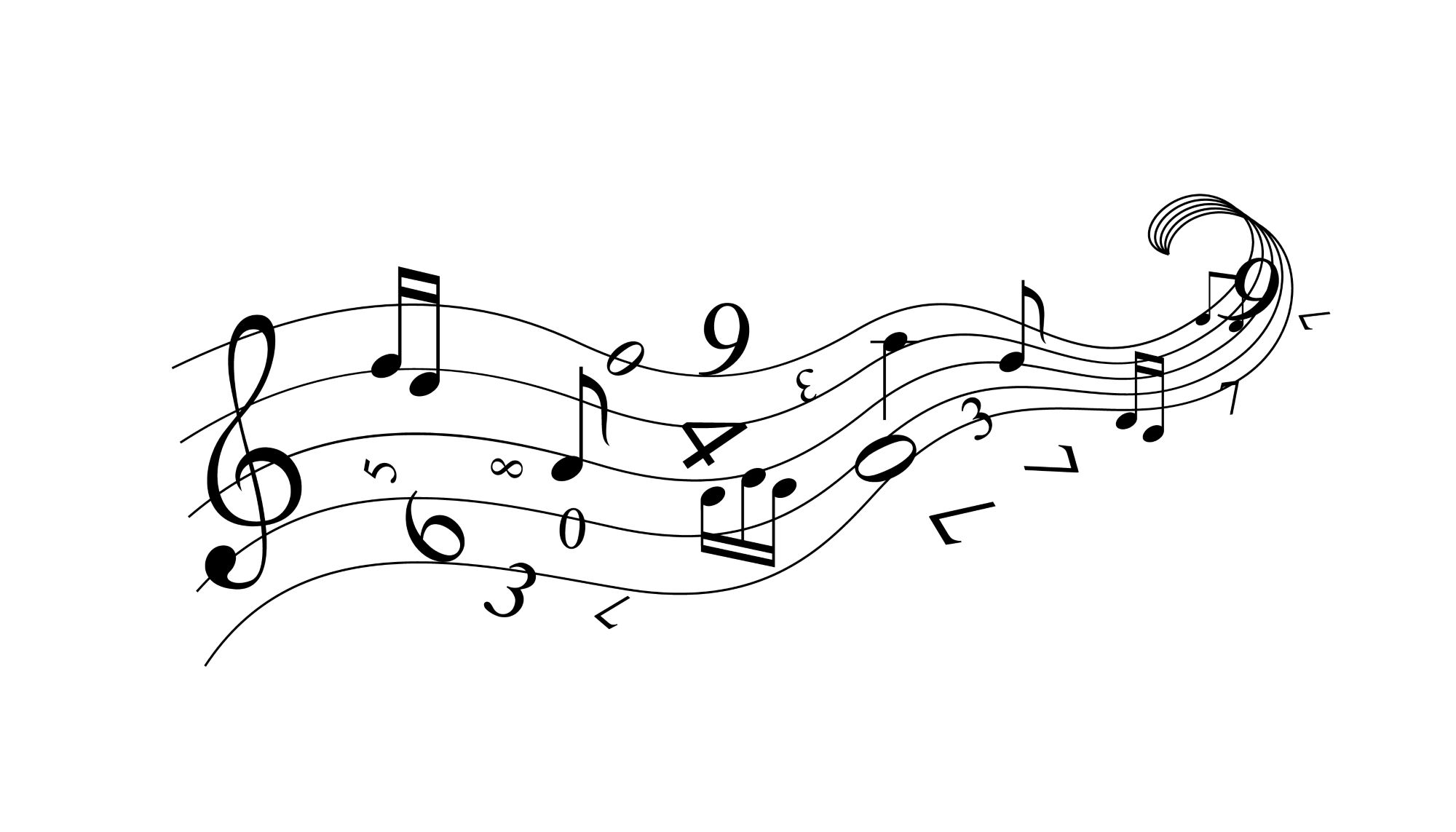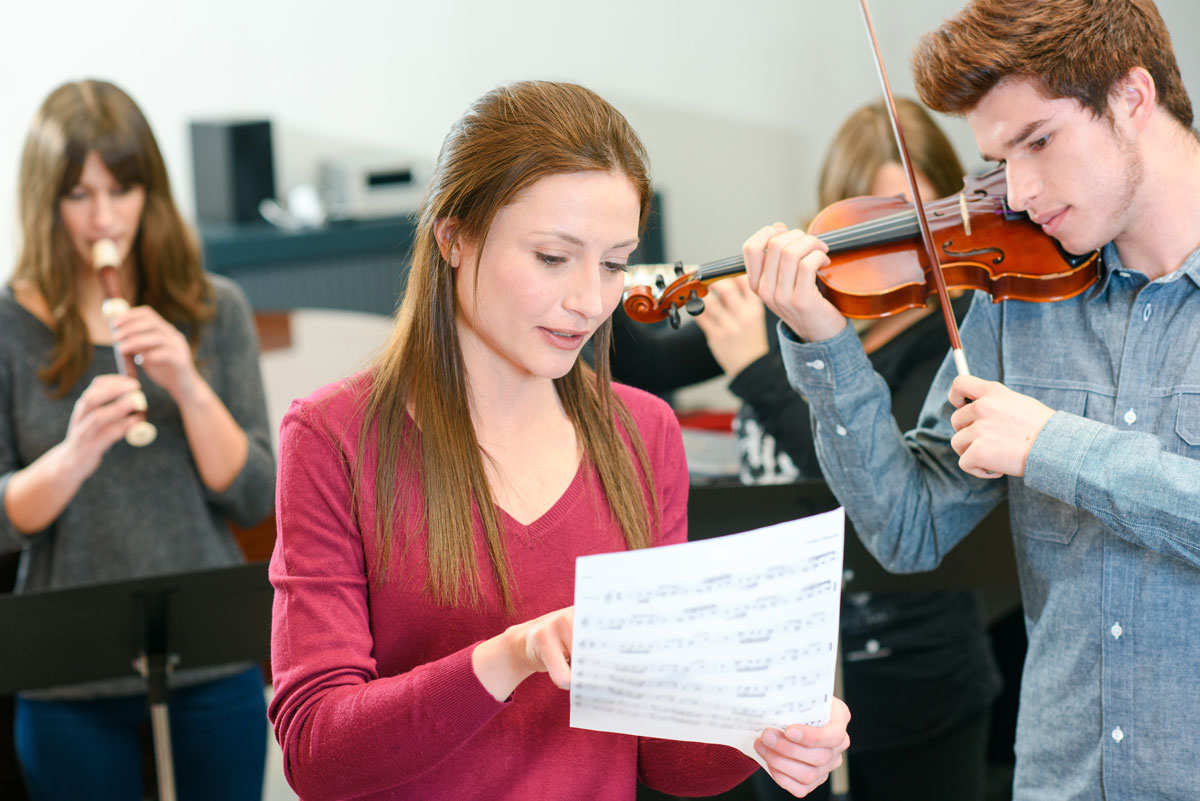Home>Events & Info>Music Therapy>How Does Music Therapy Help Parkinsons Disease


Music Therapy
How Does Music Therapy Help Parkinsons Disease
Modified: February 14, 2024
Discover the benefits of music therapy for Parkinson's disease. Learn how music therapy can improve symptoms and enhance overall well-being.
(Many of the links in this article redirect to a specific reviewed product. Your purchase of these products through affiliate links helps to generate commission for AudioLover.com, at no extra cost. Learn more)
Table of Contents
- Introduction
- What is Parkinson’s Disease?
- Symptoms of Parkinson’s Disease
- Understanding Music Therapy
- Benefits of Music Therapy for Parkinson’s Disease
- How Does Music Therapy Help with Motor Symptoms?
- How Does Music Therapy Improve Cognitive Functions?
- The Emotional and Psychological Impact of Music Therapy
- Incorporating Music Therapy into Parkinson’s Disease Treatment
- Case Studies and Success Stories
- Conclusion
Introduction
Music has always played a significant role in our lives, invoking emotions and connecting us to our inner selves. But did you know that music can also have therapeutic effects on our physical, emotional, and mental well-being? This is where the concept of music therapy comes into play.
Music therapy is a type of therapy that utilizes the power of music to improve and maintain the health and well-being of individuals. It is a professional field that combines music and therapeutic techniques to address various physical, emotional, cognitive, and social needs. One area where music therapy has shown immense promise is in helping individuals with Parkinson’s disease.
Parkinson’s disease is a neurodegenerative disorder that affects the nervous system, causing a wide range of symptoms such as tremors, stiffness, balance problems, and cognitive decline. While there is no cure for Parkinson’s disease, music therapy has emerged as a complementary treatment option that can significantly improve the quality of life for individuals living with this condition.
Throughout this article, we will explore the benefits of music therapy for individuals with Parkinson’s disease and delve into how it can help alleviate motor symptoms, improve cognitive functions, and have a positive emotional and psychological impact. We will also discuss the integration of music therapy into Parkinson’s disease treatment and provide case studies and success stories that demonstrate the effectiveness of this therapeutic approach.
So, if you or a loved one is living with Parkinson’s disease, keep reading to discover how music therapy can be a valuable tool on your path to wellness and enhanced well-being.
What is Parkinson’s Disease?
Parkinson’s disease is a progressive neurodegenerative disorder that affects the central nervous system. It primarily affects dopamine-producing neurons in a region of the brain called the substantia nigra. Dopamine is a neurotransmitter responsible for facilitating smooth, coordinated movements.
As Parkinson’s disease progresses, the dopamine-producing neurons gradually degenerate, leading to a shortage of dopamine in the brain. This dopamine deficiency results in a range of motor and non-motor symptoms.
The motor symptoms of Parkinson’s disease include tremors, stiffness, bradykinesia (slowed movements), and postural instability. Patients may experience difficulty with tasks such as walking, writing, or even simple daily activities. As the disease advances, these symptoms may worsen and become more debilitating.
In addition to the motor symptoms, Parkinson’s disease can also cause non-motor symptoms. These include cognitive impairments, depression, anxiety, sleep disturbances, and autonomic dysfunctions.
It is important to note that Parkinson’s disease is a chronic and progressive condition. While there is no cure for the disease, various treatment options are available to help manage symptoms and improve quality of life.
Next, we will explore how music therapy can be a valuable tool in addressing the challenges faced by individuals living with Parkinson’s disease.
Symptoms of Parkinson’s Disease
Parkinson’s disease presents a wide range of symptoms that can vary in severity and progression from person to person. These symptoms can be grouped into two main categories: motor symptoms and non-motor symptoms.
The motor symptoms of Parkinson’s disease are often the most noticeable and include:
- Tremors: Involuntary shaking or trembling, typically starting in the hands or fingers, but can also affect the legs, face, or other parts of the body.
- Bradykinesia: Slowed movements and difficulty initiating and performing voluntary movements. Simple tasks like buttoning a shirt or writing can become challenging.
- Rigidity: Stiffness and inflexibility of the muscles, making movement and mobility difficult.
- Postural instability: Balance problems and a tendency to lean forward or experience unsteady movements, increasing the risk of falls.
Non-motor symptoms of Parkinson’s disease may include:
- Cognitive impairments: Problems with memory, attention, and executive functions, such as planning and problem-solving.
- Depression and anxiety: Feelings of sadness, low mood, and anxiety are common in Parkinson’s disease and can have a significant impact on quality of life.
- Sleep disturbances: Trouble falling asleep, staying asleep, or experiencing vivid and intense dreams.
- Autonomic dysfunctions: The autonomic nervous system controls functions such as blood pressure, digestion, and bladder control. Parkinson’s disease can cause disturbances in these functions, leading to issues like constipation, urinary difficulties, and low blood pressure.
It’s important to note that the symptoms of Parkinson’s disease can vary widely among individuals. Some may experience primarily motor symptoms, while others may struggle more with non-motor symptoms. The progression and severity of the symptoms also differ from person to person, making it crucial to tailor treatment approaches to individual needs.
In the next section, we will explore how music therapy can help alleviate these symptoms and improve the overall well-being of individuals living with Parkinson’s disease.
Understanding Music Therapy
Music therapy is an evidence-based therapeutic approach that utilizes music to address physical, emotional, cognitive, and social needs. It involves the systematic and intentional use of music and musical elements by a trained music therapist to facilitate positive changes in an individual’s well-being.
A qualified music therapist works closely with individuals to develop personalized treatment plans that incorporate various musical interventions. These interventions can include listening to music, creating music, singing, playing musical instruments, and engaging in rhythmic movement. The choice of intervention depends on the specific goals and needs of the individual.
Music therapy is a holistic approach that considers the individual as a whole, rather than focusing solely on specific symptoms or conditions. It recognizes the inherent emotional and physiological responses that music can elicit and utilizes these responses to promote healing and well-being.
One of the key principles of music therapy is that music has a unique ability to engage multiple areas of the brain simultaneously. This can have a profound impact on various cognitive processes, emotional regulation, and physical movement. In the context of Parkinson’s disease, music therapy has shown exceptional promise in improving motor function, cognitive abilities, and emotional well-being.
It’s important to note that music therapy is not just about passively listening to music. The active participation and engagement with music, under the guidance of a music therapist, are crucial for achieving therapeutic goals.
Music therapy is a flexible and adaptable form of therapy that can be tailored to the specific needs and preferences of each individual. Sessions can take place in individual or group settings, depending on the therapeutic goals and the level of social interaction that is beneficial for the client.
In the next section, we will explore the specific benefits of music therapy for individuals with Parkinson’s disease and how it can help alleviate various symptoms and improve overall well-being.
Benefits of Music Therapy for Parkinson’s Disease
Music therapy has been found to offer a range of benefits for individuals living with Parkinson’s disease. It can significantly improve various aspects of their physical, cognitive, and emotional well-being. Let’s explore these benefits in detail:
1. Improved Motor Function:
Music therapy can have a positive impact on motor symptoms associated with Parkinson’s disease. Rhythmic auditory stimulation, such as synchronized movements to music, has been shown to enhance motor control, reduce tremors, and improve gait and balance. The rhythmic nature of music can help individuals synchronize their movements and overcome the challenges posed by Parkinson’s-related motor impairments.
2. Enhanced Cognitive Function:
Engaging with music stimulates various cognitive processes, including memory, attention, and executive functions. Music therapy can help individuals with Parkinson’s disease maintain and improve cognitive abilities through activities like singing, playing instruments, and engaging in music-based games. This can have a positive impact on memory, problem-solving skills, and overall cognitive functioning.
3. Emotional and Psychological Well-being:
Parkinson’s disease can often lead to emotional challenges such as depression, anxiety, and feelings of isolation. Music therapy provides a creative and expressive outlet for individuals to release emotions, reduce stress, and enhance mood. Through personalized music selections and therapeutic techniques, music therapy can evoke positive emotions and provide comfort, helping individuals better cope with the emotional impact of Parkinson’s disease.
4. Social Engagement and Connection:
Participating in music therapy sessions in a group setting can foster social interaction and connection among individuals with Parkinson’s disease. Group music-making activities promote a sense of belonging and support, reducing feelings of isolation. The shared experience of creating music together can also enhance communication skills and strengthen social bonds.
5. Quality of Life:
Overall, music therapy can significantly improve the quality of life for individuals living with Parkinson’s disease. By addressing the physical, cognitive, and emotional aspects of the condition, music therapy empowers individuals to actively engage in their treatment and find joy, fulfillment, and a sense of purpose despite the challenges they face.
Incorporating music therapy into the treatment plan for Parkinson’s disease can complement other interventions and enhance the overall outcomes for individuals living with this condition. In the next sections, we will explore in more detail how music therapy specifically helps with motor symptoms, improves cognitive functions, and has emotional and psychological benefits for individuals with Parkinson’s disease.
How Does Music Therapy Help with Motor Symptoms?
Music therapy has shown promising results in improving motor symptoms associated with Parkinson’s disease. The rhythmic and repetitive nature of music can help individuals with Parkinson’s synchronize their movements, improve motor control, and alleviate symptoms such as tremors and gait disturbances.
One technique used in music therapy for Parkinson’s is called Rhythmic Auditory Stimulation (RAS). This technique involves synchronizing movements with a specific rhythm provided by music. For example, walking to the beat of a drum or tapping fingers to the rhythm of a song. RAS helps bypass the impaired neural pathways associated with Parkinson’s disease, facilitating more fluid and coordinated movements. Studies have shown that RAS can improve gait, increase walking speed, and enhance overall motor functioning in individuals with Parkinson’s disease.
In addition to RAS, other music-based activities such as playing percussion instruments or engaging in rhythmic movements can also improve motor function. The repetitive and structured nature of these activities can help individuals with Parkinson’s disease regain control over their movements and increase mobility.
Furthermore, music therapy sessions often incorporate exercises that target specific motor skills. These exercises focus on range of motion, coordination, and fine motor skills. By engaging in these exercises, individuals can strengthen their muscles, improve motor planning, and enhance overall physical dexterity.
Music therapy can also provide a motivating and enjoyable environment for individuals to practice and engage in ongoing physical movement. The incorporation of music adds an element of fun and encourages individuals to participate in therapeutic exercises more consistently and with increased enthusiasm.
The impact of music therapy on motor symptoms can be further enhanced when combined with other approaches such as physical therapy or occupational therapy. Integrated interdisciplinary treatment approaches that combine music therapy with other evidence-based interventions have shown promising results in improving motor outcomes for individuals with Parkinson’s disease.
It’s important to note that music therapy should be tailored to the specific needs and abilities of each individual. A music therapist skilled in working with individuals with Parkinson’s disease can assess the unique challenges and develop a customized treatment plan that best targets motor symptoms and addresses the individual’s overall goals and needs.
In the next section, we will explore how music therapy can improve cognitive functions, another important area affected by Parkinson’s disease.
How Does Music Therapy Improve Cognitive Functions?
Music therapy has been found to have a positive impact on cognitive functions in individuals with Parkinson’s disease. The multifaceted nature of music engages various cognitive processes, stimulating memory, attention, and executive functions.
One way that music therapy improves cognitive functions is through the use of familiar music. Research has shown that listening to familiar music can evoke memories and emotions, activating neural pathways associated with memory retrieval. This can be especially beneficial for individuals with Parkinson’s disease who may experience difficulties with memory. Singing or engaging in activities that involve familiar songs can help enhance memory recall and cognitive processing.
Moreover, music therapy often involves learning to play musical instruments or engaging in music-based games that require attention and concentration. These activities can challenge cognitive skills such as sustained attention, sequencing, and problem-solving. Regular engagement in these exercises can help individuals with Parkinson’s disease maintain and improve their cognitive abilities.
Rhythmic auditory stimulation, a technique commonly used in music therapy, can also have positive effects on cognition. The synchronization of movements to rhythm stimulates neural networks involved in motor and cognitive processing. As a result, individuals with Parkinson’s disease may experience improvements in both motor and cognitive functions.
Additionally, music therapy creates an engaging and stimulating environment that can enhance cognitive functioning. Playing music, singing, and participating in music-based activities can promote mental flexibility, creativity, and improved verbal and non-verbal communication skills. These activities require individuals to engage in problem-solving, adapt to changes in the music, and communicate and collaborate with others. Such cognitive demands can have a beneficial impact on overall cognitive functioning.
It’s important to note that music therapy for cognitive improvement should be tailored to the individual’s specific needs and abilities. A skilled music therapist can assess the cognitive abilities of the individual with Parkinson’s disease and design interventions that target areas of concern, such as attention, memory, and executive functions.
While music therapy cannot reverse the underlying neurodegenerative process of Parkinson’s disease, it can offer a supportive and stimulating environment to help individuals maintain cognitive skills, improve cognitive functioning, and ultimately enhance their overall quality of life.
In the next section, we will explore the emotional and psychological impact of music therapy for individuals with Parkinson’s disease.
The Emotional and Psychological Impact of Music Therapy
Music therapy can have a profound emotional and psychological impact on individuals living with Parkinson’s disease. The power of music to evoke emotions, create connections, and foster self-expression makes it a valuable tool in addressing the emotional and psychological challenges faced by individuals with this condition.
One of the key benefits of music therapy is its ability to reduce anxiety and depression. Engaging with music, whether through listening, singing, or playing instruments, releases endorphins and promotes relaxation. The rhythmic and melodic elements of music can help regulate emotions and provide a sense of calm and inner peace. Additionally, the social interaction and support provided in music therapy group settings can alleviate feelings of loneliness and isolation, contributing to improved emotional well-being.
Music therapy also provides a creative and expressive outlet for individuals. It allows them to communicate and express their emotions, thoughts, and experiences in a safe and non-judgmental environment. Through songwriting, improvisation, or simply discussing the emotions evoked by certain pieces of music, individuals with Parkinson’s disease can express themselves and gain a deeper understanding of their own emotions.
Moreover, music has the ability to evoke memories and reminiscence. Familiar songs or music associated with significant life events can trigger memories and emotions, fostering a sense of identity and promoting self-reflection. This can be particularly valuable for individuals with Parkinson’s disease, as memory impairments and cognitive difficulties are common. Engaging in music therapy sessions that incorporate familiar and meaningful music can provide individuals with a sense of connection to their past and enhance their overall emotional well-being.
Furthermore, music therapy can improve self-confidence and self-esteem. Learning to play an instrument or singing in a group setting can empower individuals and provide a sense of accomplishment. Being able to actively participate and create music can boost confidence and enhance self-perception.
It’s important to note that music therapy is not a standalone treatment for emotional and psychological well-being. It should be integrated into a comprehensive treatment plan that may involve other interventions such as counseling or medication. However, music therapy can be a valuable adjunctive therapy that complements other approaches and helps individuals better cope with the emotional challenges of Parkinson’s disease.
In the next section, we will explore how music therapy can be incorporated into the overall treatment plan for Parkinson’s disease.
Incorporating Music Therapy into Parkinson’s Disease Treatment
Music therapy can be a valuable component of the overall treatment plan for individuals with Parkinson’s disease. When integrated into the care approach, it can provide holistic benefits and enhance the effectiveness of other interventions. Here are some considerations for incorporating music therapy into Parkinson’s disease treatment:
Collaborative Treatment Approach:
Collaboration between the music therapist, healthcare professionals, and the individual with Parkinson’s disease is essential for a comprehensive treatment plan. By working together, goals and objectives can be identified, and the music therapy program can be tailored to address specific needs and complement other therapies, such as medication management, physical therapy, and speech therapy.
Individualized Treatment Plans:
Music therapy is highly individualized, with treatment plans tailored to the unique needs, abilities, and preferences of each person. A skilled music therapist will conduct assessments to understand the challenges and goals of the individual with Parkinson’s. Based on this assessment, a customized treatment plan will be developed to target motor symptoms, cognitive skills, emotional well-being, and overall quality of life.
Sessions Frequency and Duration:
The frequency and duration of music therapy sessions will depend on the individual’s needs and treatment goals. Regular sessions are typically recommended to ensure consistent engagement and progress. The duration of each session can vary but is typically around 30 to 60 minutes. It’s important to establish a schedule that allows for regular participation and adherence to the therapy plan.
Incorporating Music in Daily Life:
Music therapy can extend beyond the therapy sessions, with individuals encouraged to incorporate music in their daily lives. Listening to favorite songs, engaging in rhythmic movements, or playing musical instruments can provide ongoing benefits between therapy sessions. Music can be used as a tool for relaxation, motivation, and emotional well-being, even outside the formal music therapy setting.
Caregiver Involvement:
Caregiver involvement is crucial in supporting the integration of music therapy into the treatment plan. Caregivers can assist in ensuring regular attendance, contributing to the selection of music, and participating in music-based activities with the individual. This involvement can enhance the therapeutic experience and strengthen the emotional connection between the individual with Parkinson’s and their caregiver.
It’s important to work with a qualified and experienced music therapist who specializes in working with individuals with Parkinson’s disease. They will have the knowledge and expertise to design and implement appropriate music interventions and ensure the safety and well-being of the individuals participating in the therapy.
In the next section, we will explore case studies and success stories that demonstrate the effectiveness of music therapy for individuals living with Parkinson’s disease.
Case Studies and Success Stories
There have been several inspiring case studies and success stories that highlight the effectiveness of music therapy in improving the well-being and quality of life for individuals living with Parkinson’s disease. Here are a few examples:
Case Study 1: John
John, a 65-year-old man with Parkinson’s disease, was experiencing decreased mobility, muscle rigidity, and difficulty with speech. He began music therapy sessions that incorporated rhythmic movements and singing exercises. Over time, John’s motor function significantly improved. He regained strength, coordination, and balance, and his speech became more clear and articulate. Music therapy not only helped with his physical symptoms but also boosted his confidence and provided an outlet for self-expression.
Case Study 2: Sarah
Sarah, a 58-year-old woman with Parkinson’s disease, was struggling with memory loss and cognitive decline. She engaged in music therapy sessions that focused on memory recall through familiar songs and singing exercises. Sarah’s memory improved, and she regained the ability to recall and discuss past events with greater clarity. The music therapy sessions also helped her connect emotionally with her memories, providing a sense of identity and enhancing her overall well-being.
Success Story 1: Michael
Michael, a 70-year-old man with Parkinson’s disease, had been experiencing depression and isolation due to the limitations imposed by his condition. He joined a music therapy group where he learned to play the guitar and participated in group singing activities. The supportive environment and social interactions in the group brought him a renewed sense of belonging and purpose. Through music therapy, Michael regained his joy of life, formed meaningful connections with others, and found a creative outlet for emotional expression.
Success Story 2: Lisa
Lisa, a 45-year-old woman with Parkinson’s disease, had been dealing with anxiety and sleep disturbances. She started music therapy sessions that incorporated relaxation techniques, guided imagery, and calming music. Through these sessions, Lisa learned to use music as a tool for relaxation and stress reduction. She reported improved sleep quality, reduced anxiety levels, and an improved overall sense of well-being. Music therapy gave Lisa the coping strategies she needed to better manage her emotional and psychological symptoms.
These case studies and success stories demonstrate the transformative impact that music therapy can have on individuals with Parkinson’s disease. Whether it is improving motor function, enhancing cognitive abilities, or supporting emotional well-being, music therapy offers a holistic approach to improving the quality of life and overall well-being of those living with Parkinson’s disease.
In the next section, we will conclude our exploration of music therapy and its role in Parkinson’s disease treatment.
Conclusion
Music therapy is a powerful and effective complementary treatment option for individuals living with Parkinson’s disease. It offers numerous benefits for physical, cognitive, and emotional well-being, enhancing the overall quality of life for those affected by this neurodegenerative disorder.
Through rhythmic auditory stimulation, music therapy can improve motor function, reduce tremors, and enhance balance and coordination in individuals with Parkinson’s disease. Engaging in music-based activities stimulates cognitive processes, improving memory, attention, and executive functions. Additionally, music therapy provides a creative and expressive outlet for emotional release, reducing anxiety, depression, and feelings of isolation.
By incorporating music therapy into the comprehensive treatment plan for Parkinson’s disease, individuals can experience positive outcomes and improvements in various aspects of their lives. Collaborative efforts between music therapists, healthcare professionals, and caregivers help tailor interventions to meet the unique needs and abilities of each individual.
Case studies and success stories have demonstrated the transformative impact of music therapy on individuals living with Parkinson’s disease. From improved mobility and speech to enhanced cognitive functioning and emotional well-being, music therapy has the potential to make a significant difference in the lives of those affected by this condition.
If you or a loved one is living with Parkinson’s disease, consider exploring the benefits of music therapy. Working with a qualified music therapist can help develop a personalized treatment plan that addresses specific needs and enhances overall quality of life.
In conclusion, music therapy offers a holistic and person-centered approach to supporting individuals with Parkinson’s disease. Through the power of music, it provides relief, joy, and opportunities for growth, ultimately improving the overall well-being and quality of life for individuals living with this challenging condition.











